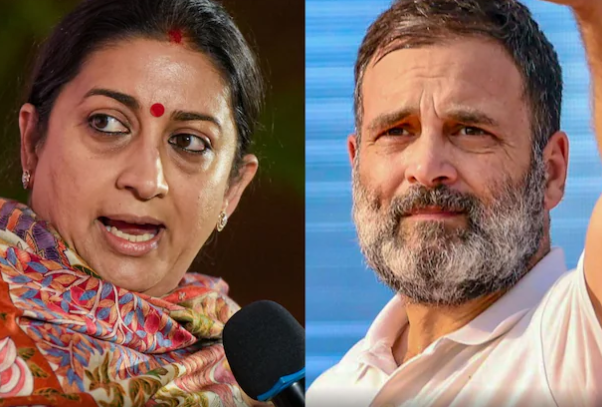The rIn the evolving landscape of Indian politics, caste-based discussions often surface as focal points in electoral strategies. Recently, Union Minister Smriti Irani offered a sharp analysis of Rahul Gandhi’s approach, suggesting a deliberate use of provocative remarks to reignite the caste debate. This article delves into Irani’s observations and Gandhi’s strategic maneuvers, exploring how these dynamics might shape the political narrative ahead.
Caste Debate: Rahul Gandhi’s Recent Remarks
Rahul Gandhi’s recent statements have rekindled debates surrounding caste dynamics in India. Smriti Irani argues that these remarks are not merely offhand comments but are strategically crafted to spotlight caste issues, particularly in states where such discourse could influence voter behavior. According to Irani, Gandhi’s remarks are designed to provoke reactions and shift the focus of political discourse to caste, aiming to mobilize specific voter bases.
Smriti Irani’s Critique: A Tactical Move or Genuine Concern?
Irani’s critique suggests that Gandhi’s strategy might be more tactical than genuine. She posits that by bringing caste into the forefront, Gandhi seeks to polarize voters, potentially diverting attention from other critical issues. Irani’s analysis implies that this tactic could be a double-edged sword, potentially alienating some voter segments while galvanizing others.
Key Points of Irani’s Analysis:
- Provocative Remarks: Irani believes Gandhi’s comments are calculated to provoke responses, particularly from political rivals.
- Caste Focus: The emphasis on caste is seen as a move to reignite old divisions, possibly to consolidate votes in key regions.
- Political Calculus: According to Irani, this strategy reflects a broader political calculus aimed at shifting the narrative ahead of crucial elections.
The Broader Implications: Caste Politics in Modern India
Caste has always been a potent force in Indian politics. Gandhi’s approach, as analyzed by Irani, taps into this long-standing dynamic. However, the implications of such a strategy are multifaceted. On one hand, it could strengthen ties with certain voter bases; on the other, it risks deepening divisions in an already polarized society.
Examining the Effectiveness:
- Historical Precedence: Caste-based politics has a history of success in various Indian states. However, the current political climate is more complex, with voters increasingly aware of broader socio-economic issues.
- Voter Perception: How voters perceive Gandhi’s remarks will be crucial. If seen as opportunistic, it could backfire, but if viewed as addressing genuine concerns, it might resonate well.
Potential Risks and Rewards
Gandhi’s strategy, as outlined by Irani, is not without risks. While it might secure short-term gains by rallying specific groups, it could also lead to long-term challenges by reinforcing caste divisions. Moreover, this approach might invite criticism from those advocating for a more issue-based and inclusive political discourse.
Risks:
- Polarization: Deepening caste divisions could alienate broader voter segments.
- Backlash: There’s potential for backlash from both political rivals and the electorate if the strategy is perceived as divisive.
Rewards:
- Consolidation of Votes: Targeted caste-based appeals could consolidate votes in regions where caste identity remains a significant factor.
- Shifting the Narrative: By focusing on caste, Gandhi could shift the political narrative, forcing rivals to engage on his terms.
Conclusion: Navigating the Complex Terrain of Caste Politics
Smriti Irani’s analysis of Rahul Gandhi’s strategy provides a lens through which to view the ongoing political maneuvers in India. Whether Gandhi’s focus on caste proves to be a masterstroke or a misstep will depend on how voters react in the coming months. As the political landscape continues to evolve, caste will likely remain a critical, albeit contentious, element in the strategies of India’s political leaders.








